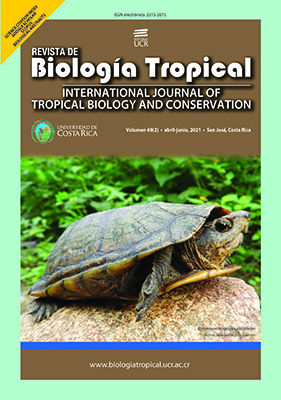Abstract
Introduction: In amphibians, blood may act as a hematopoietic tissue. However, the knowledge concerning hematological features is scarce, there is not much information that allows an analysis about the possible explanations of this physiological feature. Objective: This study aimed to evaluate the relationship between immature red blood cells (RBCs) mitosis and the presence of blood parasites in amphibians. Methods: We sampled 116 amphibians (31 species) in six Colombian localities. Blood was taken by cardiac puncture or maxillary vein puncture. Smears were prepared, fixed, and Giemsa stained for microscopical analysis. The variables analyzed were the percentage of immature RBCs, mitotic cells in peripheral blood, and blood parasite infection. Data were analyzed using Wilcoxon's rank test and exact Fisher statistical tests. Results: Sixty-two individuals showed mitosis in peripheral blood, and these mitotic RBCs shared morphological features with immature RBCs. Overall, parasite prevalence was 30.1 %, distributed as follows: Trypanosoma (24.1 %), Hepatozoon-like (6 %), Dactylosoma (4.3 %), Karyolysus-like (0.9 %), and Filarioidea (2.6 %). A positive association between the percentage of immature RBCs and the presence of mitotic RBCs was found, and also between the blood parasite infection and the percentage of immature RBCs. Conclusions: In this study, we found that the presence of blood parasites, immature RBCs, and RBCs mitosis are frequent events in amphibians' peripheral blood, and our analysis suggests an association between those features. Thus, the release of immature RBCs and the mitosis of those cells in peripheral blood may be a physiological response to blood parasite infection. Further studies characterizing hematology in amphibians and wildlife, in general, are desirable.
##plugins.facebook.comentarios##

This work is licensed under a Creative Commons Attribution 4.0 International License.
Copyright (c) 2021 Leydy P. González, Carolina M. Vargas-León, Gustavo Andrés Fuentes-Rodríguez, Martha L. Calderón-Espinosa, Nubia E. Matta







